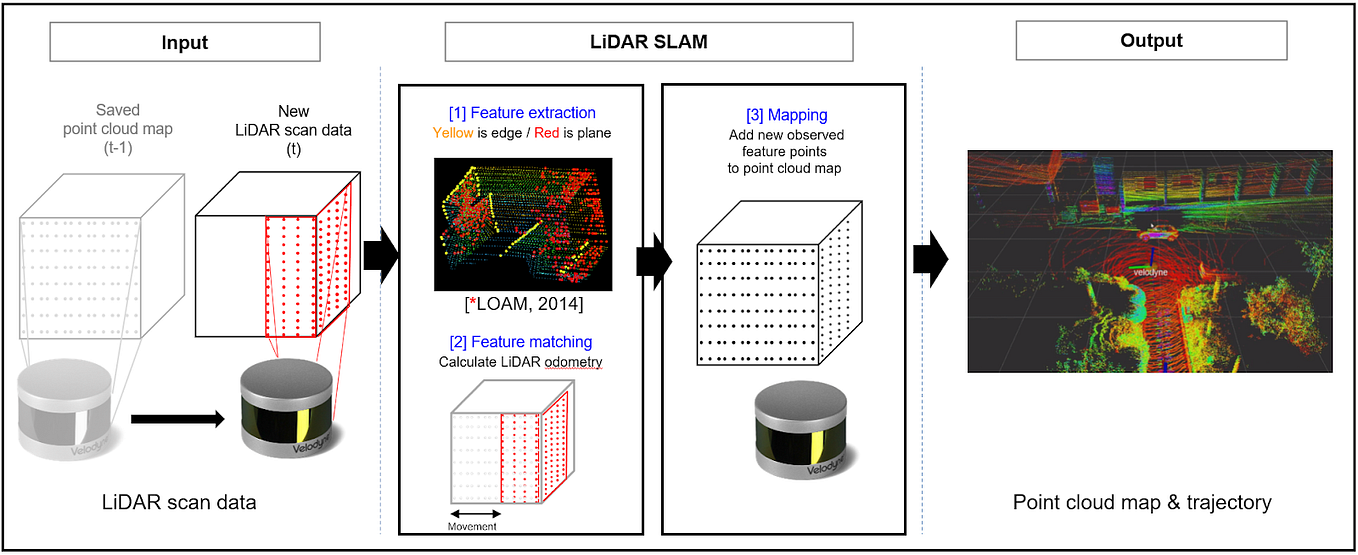Lidar SLAM
A comparison of different SLAM approaches for 3D data
Overview of SLAM Algorithms for 3D Data
This blog compares different approaches for performing SLAM on 3D data using Lidar sensors. We will look at algorithms such as LOAM, FLOAM, HDL-Graph-SLAM, LIO-SAM, and SC-LIO, discussing their strengths, weaknesses, and ideal applications.
LOAM (Lidar Odometry and Mapping)
LOAM is an efficient SLAM method optimized for sparse environments. It uses feature extraction (edge and surface) for matching, significantly speeding up processing. However, it may struggle in high-density data environments.

FLOAM (Fast LOAM)
FLOAM is an optimized version of LOAM designed to reduce computational cost by up to three times. While this enhances its real-time capabilities, it may sacrifice accuracy, especially in complex environments.

HDL-Graph-SLAM
HDL-Graph-SLAM performs well with high-density LiDAR data, especially in urban environments, due to its GNSS and ground plane constraints. It is highly effective in structured environments but underperforms in dynamic environments.

LIO-SAM (Lidar Inertial Odometry and Mapping)
LIO-SAM integrates IMU and LiDAR data for improved accuracy in both dynamic and complex environments. It is known for its robustness and is often considered superior for real-time mapping and localization, although it requires more computational resources.

SC-LIO (Scan Context Lidar Inertial Odometry)
SC-LIO offers great performance with an efficient IMU integration, providing accurate localization even in challenging environments. It is known for its computational efficiency, but requires careful tuning to achieve optimal results.

Comparison Table
| SLAM Algorithm | Strengths | Weaknesses | Best For |
|---|---|---|---|
| LOAM | Fast, efficient, good for sparse environments | Struggles with high-density data | Sparse environments |
| FLOAM | Real-time, optimized for speed | Reduced accuracy | Low-latency applications |
| HDL-Graph-SLAM | High-density LiDAR data, GNSS and ground plane support | Performance in dynamic environments | Urban environments with high-density LiDAR |
| LIO-SAM | Robust in dynamic and complex environments, IMU-LiDAR fusion | Slightly more computationally intensive | General SLAM applications with high accuracy needs |
| SC-LIO | Accurate, efficient with IMU integration | Requires careful tuning | Applications needing precise localization |
This table provides a summary of each algorithm’s strengths, weaknesses, and ideal applications based on recent studies:contentReference[oaicite:0]{index=0}:contentReference[oaicite:1]{index=1}.
For more details on each SLAM method, you can refer to the related publications and research papers linked below.